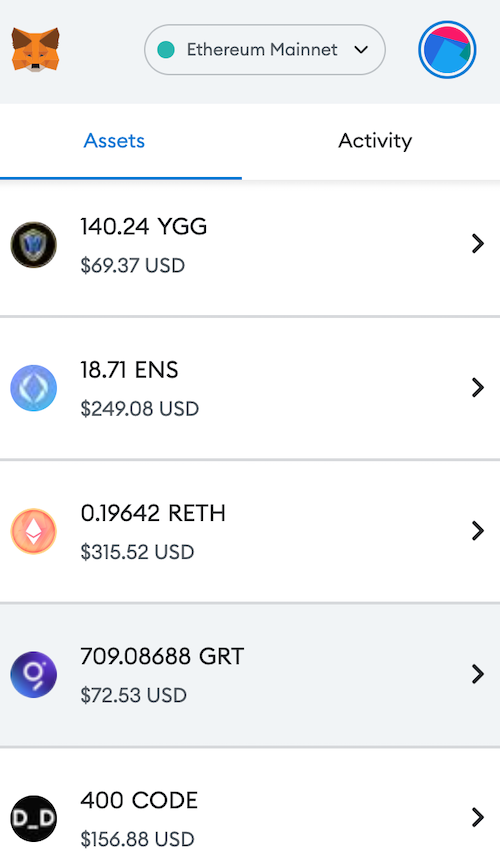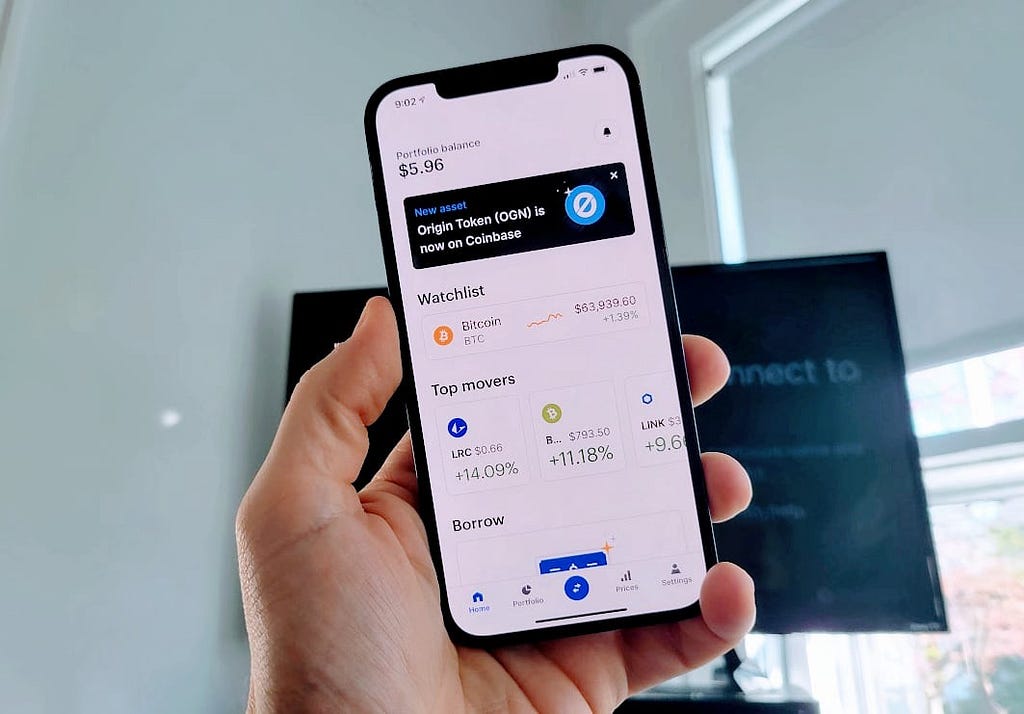What is a Crypto Wallet and why you absolutely need one
In this article we’d like to explain what a Crypto Wallet is and why you absolutely need one! Today, as web3 starts ramping up, it’s important to safeguard your credentials. This is where a web3 wallet (or crypto wallet) comes into play. Please note that you will often find both terms used interchangeably (crypto/web3 wallet) since they refer to the same thing.
If this all sounds rather confusing, read our previous article about what web3 is:
In a nutshell a crypto wallet (or simply a wallet) is used for:
- storing your cryptocurrencies and your NFTs
- accessing all the new web3 applications
Essentially, a wallet is your web3 identity!
Instead of needing to remember a lot of usernames and passwords, with a wallet you only need to know one set of credentials to access a huge number of web3 applications.A wallet holds access to your cryptocurrenciesThe first misconception that we want to clarify is that your wallet doesn’t directly hold your cryptocurrency coins or tokens. Your funds are safely stored and secured within the blockchain network (e.g., ETH or LPT in the Ethereum network, BTC in the Bitcoin network).
Please note that tokens or cryptocurrencies are synonyms!
A good analogy for a wallet is that it’s like an app on your phone that you use for online banking! The app (or website) itself doesn’t hold your funds, but rather provides you a gateway to manage your funds held within the bank’s network.
 With your wallet you can do things like checking your balance or send/receive money.In the web3/crypto world, the blockchain network itself is the bank!
With your wallet you can do things like checking your balance or send/receive money.In the web3/crypto world, the blockchain network itself is the bank!For example, in the case of Bitcoin (BTC) when you buy something like $50 worth of BTC, this is safely stored within the Bitcoin network. Same goes for your ETH tokens or LPT (Livepeer) tokens: they are safely stored within the blockchain.
To send and receive cryptocurrencies, or simply have a look at the balance of your savings, you need to have a wallet: this is your gateway to the network.
Your wallet is like a multi-currency bank account!Imagine you own a multi-currency bank account where you can store your savings in different currencies like USD, EUR, GBP, etc. In your crypto wallet you also have different sort of accounts, allowing you to store multiple cryptocurrencies. For example, MetaMask is a popular Ethereum wallet where you can store not only ETH, but also thousands of others cryptocurrencies including: LPT for Livepeer, ENS for Ethereum Name Services, and even popular stablecoins like USDC and USDT.
 In a wallet you can store different cryptocurrencies
In a wallet you can store different cryptocurrenciesA wallet address is exactly like the IBAN or Routing Number that uniquely identifies your bank account for a specific currency. This means you will have a specific Bitcoin address or Ethereum address for your wallet.
For example, take a Bitcoin address. It is made up of a randomly generated set of numbers and letters, usually consisting of 26 to 35 alphanumeric characters. Look at the first Bitcoin address ever created:
1A1zP1eP5QGefi2DMPTfTL5SLmv7DivfNaAlternatively, this is a typical Ethereum address:
0x586711030959a894CB6789889Cf59b4FEbD47A70Notice the “0x” at the beginning. This indicates the following string is a hexadecimal number. This prefix is an easy way to quickly identify an Ethereum wallet address.
Where to get a wallet?You have three options to obtain your own wallet:
- You can register on one of the main Crypto Exchanges (e.g., Coinbase, Kraken, Binance, etc.)
- You can use a Software Wallet
- You can buy a Hardware Wallet
Let’s examine these three options.
Crypto Exchange (CEX)A Crypto Exchange (or CEX) is as the word suggests, a place where you can buy cryptocurrencies using your own traditional money (e.g., fiat money like USD, EUR, GBP, etc.). Once you buy your favorite cryptocurrency (e.g. LPT for Livepeer) you can keep them in the exchange, and you will get its associated wallet address connected to your account.
Let’s take Coinbase as an example. This exchange is without a doubt the most trusted and widely known around. After you sign up for an account, you will have access through their mobile app, or desktop site, to your wallet. You can then start buying, selling, transferring, or using your cryptocurrencies exactly like you would use your traditional money in your bank account.
Crypto exchanges can also offer other benefits such earning passive interest by locking up your funds for a set period (this is called staking), debit cards for everyday use, the ability to obtain loans, and more.
 Coinbase mobile app allows you to buy, sell, transfer, or simply hold your cryptos, like a traditional bank.
Coinbase mobile app allows you to buy, sell, transfer, or simply hold your cryptos, like a traditional bank.While crypto exchanges are good for a multitude of services, including the possibility to sell your crypto in exchange for fiat currencies (e.g., USD, EUR, GBP, etc.), you cannot interact with web3 applications with the wallet addresses that the crypto exchange provide. In other words, to be able to access the many web3 applications available, you need a Software or Hardware wallet.
Software WalletA software wallet (also known as hot wallet) provides you solely with your own wallet address (to send and receive crypto). Recently software wallets have started providing you with more and more services like buying crypto (in cooperation with exchanges) or swapping between different coins from within the wallet itself. But they can do a lot more: with a software wallet installed on your browser, you can access all the new web3 applications!
One of the first and most popular software wallets is MetaMask. It is available through browsers’ extensions (e.g., Chrome, Brave, Edge) and through smartphone apps (both iOS and Android). MetaMask is a software wallet built for the Ethereum blockchain: the full list of supported tokens which are Ethereum compatible can be found here.
A software wallet like MetaMask transforms your browser into a web3 browser.
 To access web3 applications you can use a web3 wallet installed as a browser extension
To access web3 applications you can use a web3 wallet installed as a browser extensionA new generation of software wallets which are easier to use for newbies, and come with even more functionality than MetaMask, have been developed in recent years.
Coinbase Wallet is probably the easiest to use software wallet which gives you access to all major blockchains and associated cryptocurrencies. While MetaMask is a wallet designed only for Ethereum, with Coinbase Wallet you have access to major blockchain networks like Bitcoin, Litecoin, Ethereum, Solana, etc.
 Coinbase Wallet supports hundreds of thousands of coins and a whole world of decentralized apps
Coinbase Wallet supports hundreds of thousands of coins and a whole world of decentralized appsCoinbase Wallet’s approach is to hide all the complexity and present its users with an easy-to-use interface to access the new web3 world.
 Coinbase Wallet mobile app is the simplest and most intuitive wallet so far
Coinbase Wallet mobile app is the simplest and most intuitive wallet so farIf you want to know more about Coinbase Wallet, you can follow Coinbase’s Medium page and read the latest news.
Making web3 more accessible and intuitive — meet the new Coinbase Wallet mobile app
Another alternative, instead of using a browser extension, is to use a native web3 browser like Brave. Brave has a built-in web3 wallet, meaning you don’t need to install any additional software for storing your cryptocurrencies or accessing web3 applications.
 Brave is the first web3 native browser because it has a built-in walletHardware Wallet
Brave is the first web3 native browser because it has a built-in walletHardware WalletThe third option, which is strongly suggested when you own many cryptocurrencies, is to buy a Hardware Wallet (also known as cold wallet). One of the most popular brands is Ledger, having produced and sold an impressive three million units since starting in 2014.
A hardware wallet is a tiny device that you can connect to your laptop via USB cable, or via smartphone thanks to Bluetooth, that provides access to your crypto savings in the most secure way, since the device is not permanently connected to the Internet. Another famous and trusted producer of hardware wallets is Trezor.
 Ledger Nano X is one of the most popular hardware wallets from Ledger
Ledger Nano X is one of the most popular hardware wallets from LedgerWith a hardware wallet you can do the same thing that you do with a software wallet. Ledger also provides a powerful companion application (for desktop and smartphone) called Ledger Live. With Ledger Live you can track your portfolio, send and receive cryptocurrencies, swap your cryptocurrencies (e.g. USDC for LPT or vice versa), and also interact with popular DeFi applications for crypto staking (e.g. Lido for ETH staking).
 Ledger Live is a powerful companion application for your Ledger hardware walletTakeaways
Ledger Live is a powerful companion application for your Ledger hardware walletTakeaways- Your web3 (or crypto) wallet doesn’t hold your cryptocurrencies.
- Your cryptocurrencies (like ETH or LPT) are safely stored and totally protected within the network (in this case the Ethereum Network).
- Your wallet is like a multi-currency bank account where you can store different kind of cryptocurrencies.
- A crypto exchange allows you to store your crypto funds and offers a multitude of services (e.g., debit cards, loans, staking, swapping, etc.). Additionally, you can sell cryptocurrencies for fiat currencies (e.g., USD, EUR, GBP, etc.).
- A software/hardware wallet allows you to store your crypto funds, do tasks like send, receive, swap and you can also access all the new web3 applications (including DeFi and staking).
If you want to know more about how to protect your wallet, you can read our article where we explain what is safe to share and what you need to keep private:
How to protect your Crypto Wallet
Do you have any questions?Live Pioneers is the first unofficial community for long term LPT holders and supporters of the Livepeer protocol ▶️
If you have any questions, or concerns, or want to submit feedback, you can reach out to us using our social channels:
- Telegram: t.me/livepioneers
- X: x.com/livepioneers
- Blog: blog.livepioneers.com/lists
- YouTube: youtube.com/@livepioneers
 Live Pioneers is the first unofficial community supporting the Livepeer protocol
Live Pioneers is the first unofficial community supporting the Livepeer protocolWhat is a Crypto Wallet and why you absolutely need one was originally published in Coinmonks on Medium, where people are continuing the conversation by highlighting and responding to this story.
